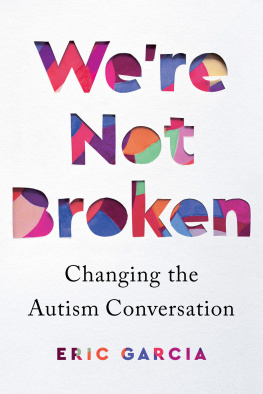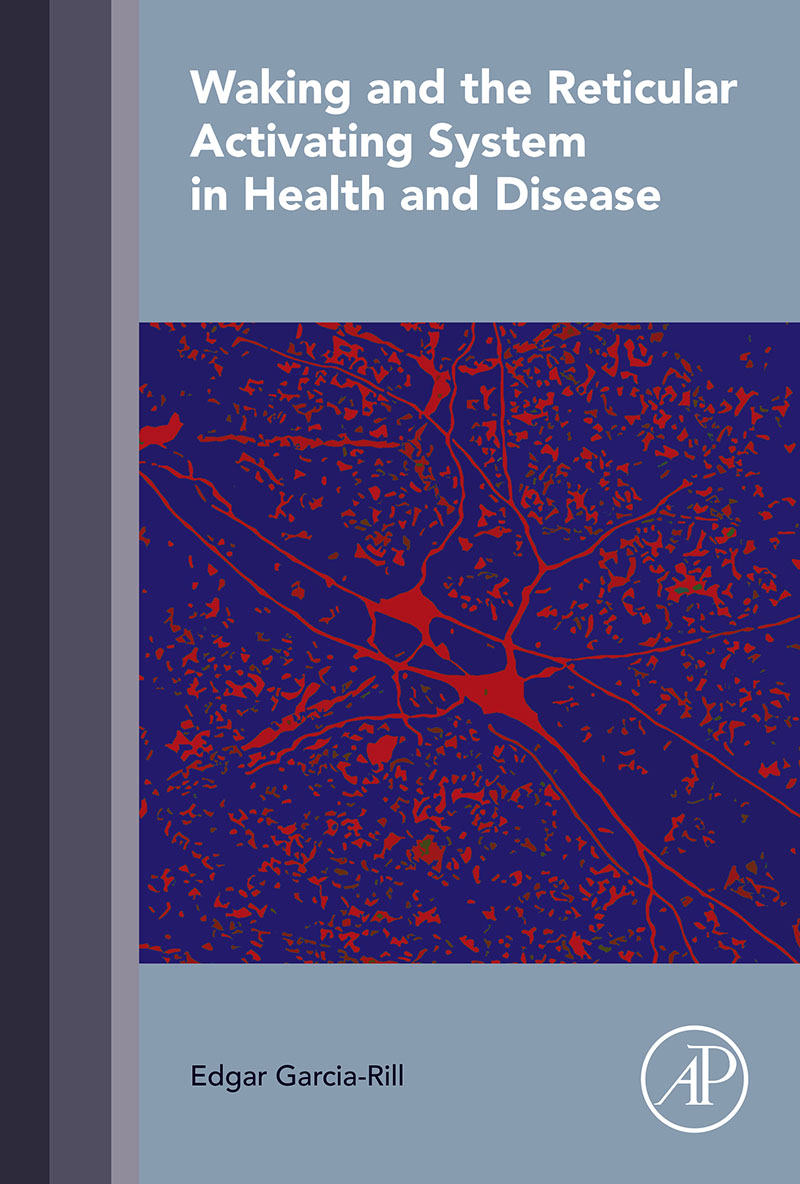Waking and the Reticular Activating System in Health and Disease
First Edition
Edgar Garcia-Rill

Copyright
Academic Press is an imprint of Elsevier
32 Jamestown Road, London NW1 7BY, UK
525 B Street, Suite 1800, San Diego, CA 92101-4495, USA
225 Wyman Street, Waltham, MA 02451, USA
The Boulevard, Langford Lane, Kidlington, Oxford OX5 1GB, UK
2015 Elsevier Inc. All rights reserved.
No part of this publication may be reproduced or transmitted in any form or by any means, electronic or mechanical, including photocopying, recording, or any information storage and retrieval system, without permission in writing from the publisher. Details on how to seek permission, further information about the Publishers permissions policies and our arrangements with organizations such as the Copyright Clearance Center and the Copyright Licensing Agency, can be found at our website: www.elsevier.com/permissions.
This book and the individual contributions contained in it are protected under copyright by the Publisher (other than as may be noted herein).
Notices
Knowledge and best practice in this field are constantly changing. As new research and experience broaden our understanding, changes in research methods, professional practices, or medical treatment may become necessary.
Practitioners and researchers must always rely on their own experience and knowledge in evaluating and using any information, methods, compounds, or experiments described herein. In using such information or methods they should be mindful of their own safety and the safety of others, including parties for whom they have a professional responsibility.
To the fullest extent of the law, neither the Publisher nor the authors, contributors, or editors, assume any liability for any injury and/or damage to persons or property as a matter of products liability, negligence or otherwise, or from any use or operation of any methods, products, instructions, or ideas contained in the material herein.
British Library Cataloguing in Publication Data
A catalogue record for this book is available from the British Library
Library of Congress Cataloging-in-Publication Data
A catalog record for this book is available from the Library of Congress
ISBN: 978-0-12-801385-4
For information on all Academic Press publications visit our website at elsevierdirect.com
Typeset by SPi Global, India
Printed and bound in The United States
14 15 16 17 10 9 8 7 6 5 4 3 2 1

Acknowledgments
A life in science is built not only on the shoulders of giants but also on the brains of friends and coworkers. I have been privileged to work with wonderful collaborators like Bernardo Dubrovsky at McGill University, Chester Hull and Nat Buchwald at UCLA, Bob Skinner at UAMS, and Francisco Urbano from Buenos Aires. Sharing ideas with colleagues has helped shape the concepts in this book, with people like Shigemi Mori and a host of excellent Japanese postdoctoral trainees, with Subimal Datta and Carlos Schenck, and definitely with Rodolfo Llinas. I have been fortunate in training and learning from graduate students like David Heister and Meijun Ye, Christen Simon and Neso Kezunovic, Nancy Reese and Charlotte Yates, and Paige Beck and James Hyde, among others.
But the kind of science that we perform takes support, a lot of it. Keith Murray at NIH gathered incredibly intelligent groups of thinkers for his supportive review committees, and it was a pleasure and an honor to work with him for many years. Merrill Mitler at NINDS was one of the most helpful program officers you could have for your individual awards. My research was supported for over 25 years by award R01 NS020246. Fred Taylor and Yanping Liu in the IDeA program at NIGMS were instrumental in helping me build the Center for Translational Neuroscience (CTN) and its core facilities, which were critical for the discoveries described herein. Their support was through awards P20 GM103425 and P30 GM110702. At UAMS, Gwen Childs and Al Reece provided me the essential opportunities and institutional resources to implement my work. Without Linda Luster's gracious and dedicated management, the administration of the CTN would be a burden instead of a pleasure. I am indebted to all of them. Thank you.
Melanie Tucker and Kathy Padilla at Elsevier were extremely helpful and supportive in the publication of this book, my sincere thanks to them. Susan Mahaffey was stellar in drafting and editing many of the figures for this book, and I am extremely grateful for her help.
Dedication
This book is dedicated to my students and trainees. They have performed the studies that allowed us to understand the RAS and how it affects brain function in health and disease. I am forever grateful and wish them long and productive careers. Today, I am as or even more excited about the next experiment, the next mystery to be resolved. I wish them the same fortune in finding a career that has brought me so much satisfaction and joy.
I also dedicate this book to the wonderful women in my life, Aracelis, Catherine, Jennifer, Sarah, and Thais (in alphabetical order). Their love and support has been integral to my successes. I love you.
Preface
There are few if any books that deal with waking proper. There are a number of books that describe the control of sleep and the mechanisms behind our sleeping hours. Considering that we spend one-third of our lives asleep, this is an important and essential endeavor. In addition, a number of thorough texts on the etiology and manifestation of a number of sleep disorders are available. These books and others on sleep medicine provide the latest on diagnosis and treatment of many of these debilitating conditions. However, we spend two-thirds of our lives awake, and it is during these hours that we accomplish such things as writing books. It is during waking that we perform great feats and create wonderful things. A number of texts describe attention, selective attention, higher cognitive abilities, and learning and memory, but almost none deals with the concept of being awake and what it takes to stay awake.
This gap in knowledge is not surprising since it has only been in the last 57 years that some of the most critical information on the mechanisms behind waking has been revealed. This information forms the core of this book. When we awaken, blood flow to the thalamus and the brain stem increases over the first 15 minutes. It is only later that there are increases in blood flow to the frontal cortex. Yet, we wake up as ourselves; it does not take 1520 min to figure out who we are. We are immediately ourselves when we awaken. This suggests that subcortical regions have much to do with our sense of self. In addition, our highest functions are thought to be mediated by fast cortical oscillations, the 40 Hz rhythm, or gamma band oscillations. Yet gamma band activity has been discovered not only in the cortex but also in the hippocampus, cerebellum, basal ganglia, and, now, the reticular activating system (RAS). Not only that, but these are not independent oscillations, they are coherent depending on the task at hand. That is, the activity in cortical and subcortical regions is in synchrony. Under some conditions, gamma activity in subcortical areas even precedes cortical gamma activity.












